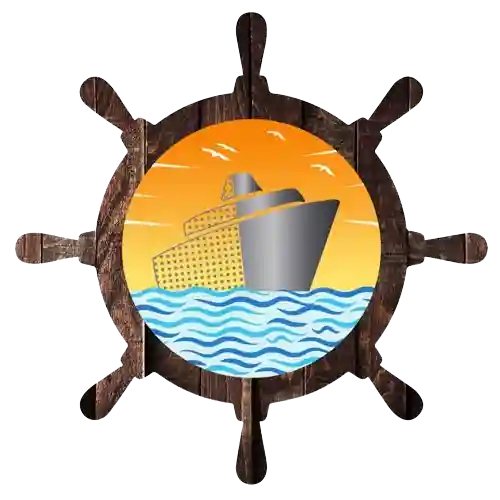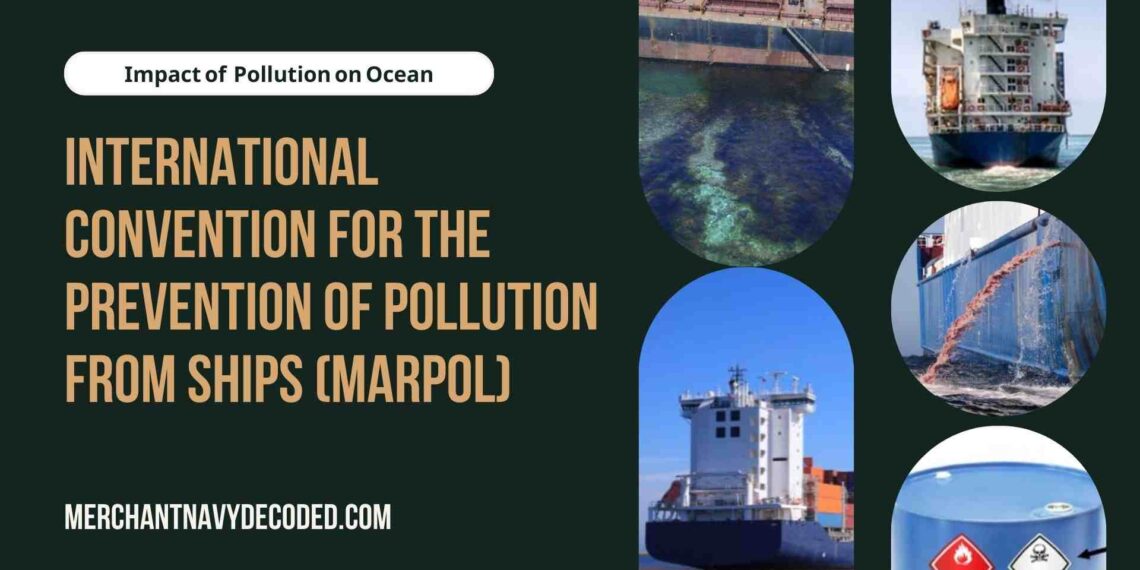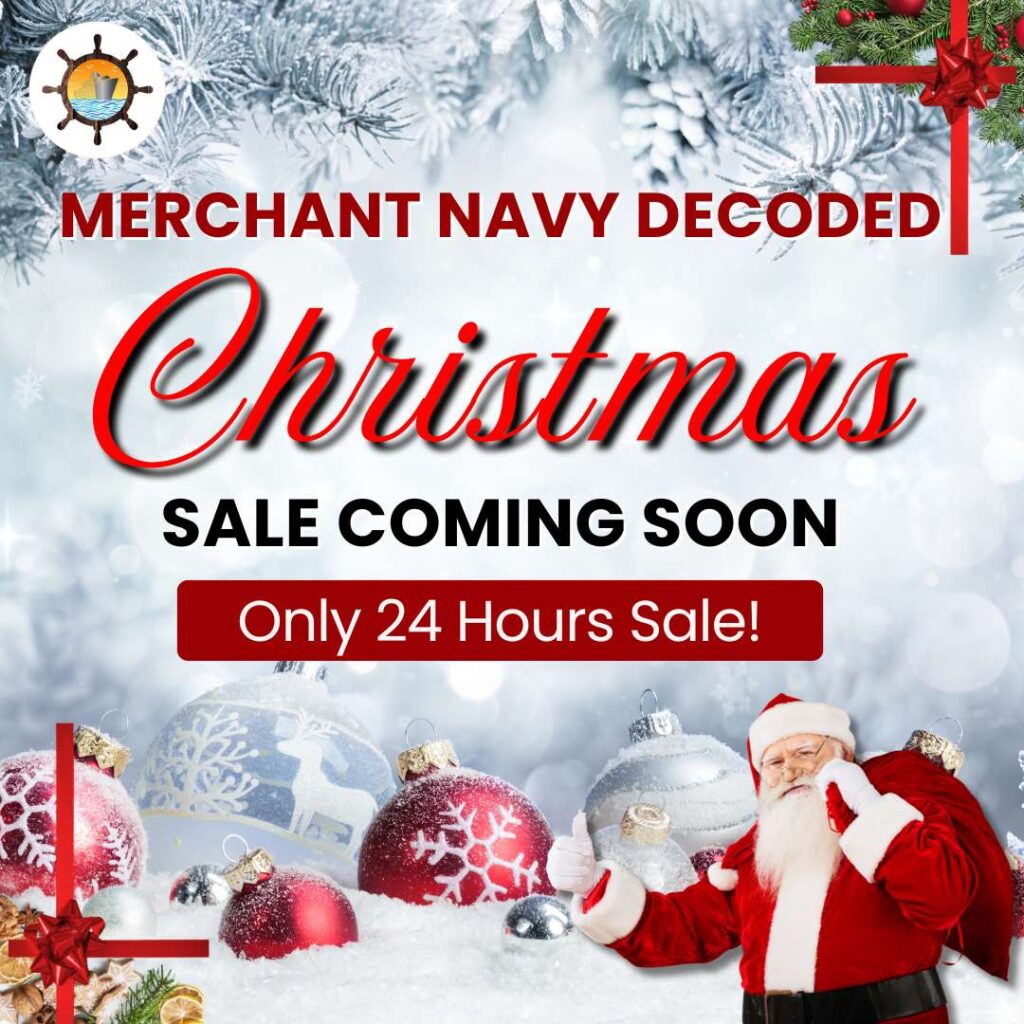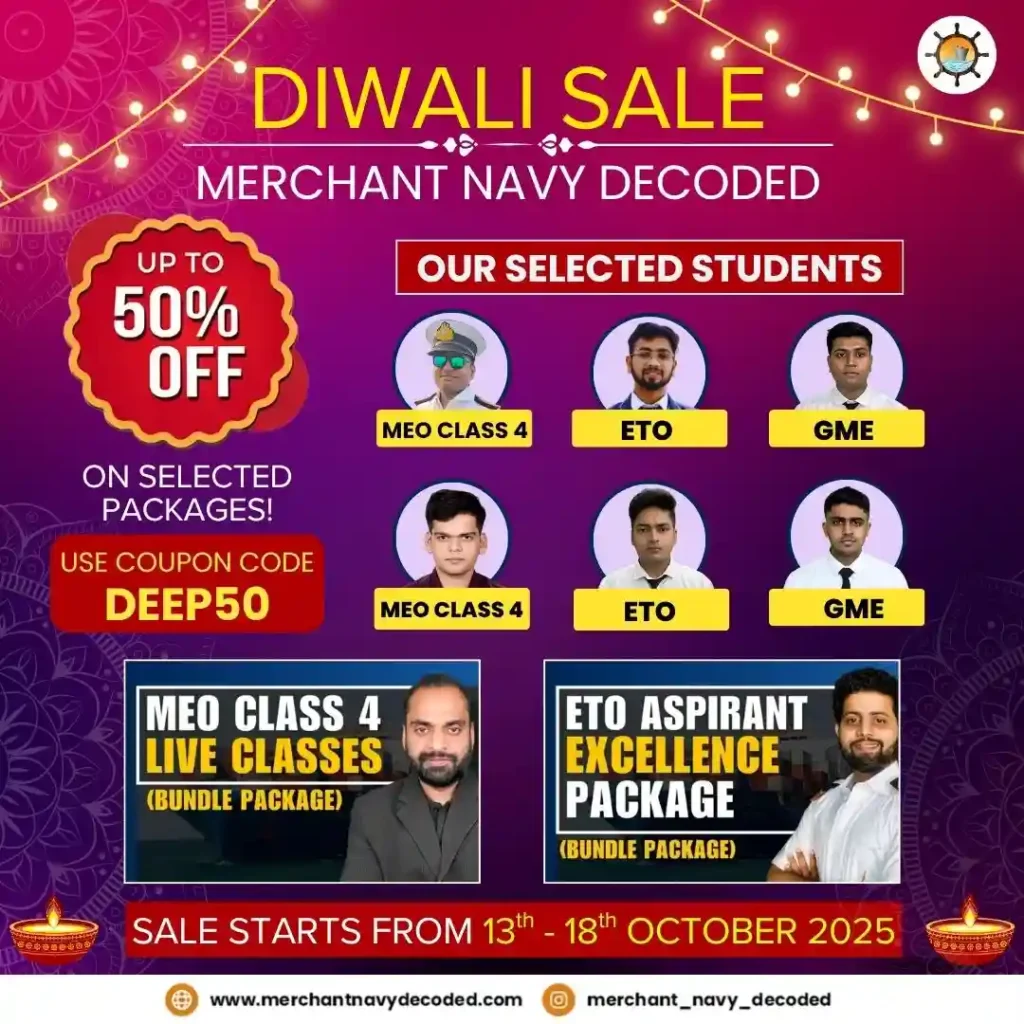International Convention for the Prevention of Pollution from Ships (MARPOL)
Introduction to MARPOL
MARPOL, short for the International Convention for the Prevention of Pollution from Ships, is like a rulebook for ships to keep our oceans clean. It was created by the International Maritime Organization in 1973 and has been updated over the years. It’s divided into six parts, called annexes, each tackling a different kind of pollution from ships like oil spills, chemicals, sewage, trash, and emissions. The main goal of MARPOL is to ensure vessels follow these rules to stop pollution and protect marine life.
MARPOL Annexure
The structure of the International Convention for the Prevention of Pollution from Ships (MARPOL) is designed to address various types of marine pollution through a comprehensive framework comprising annexes, each focusing on specific pollutants and regulations.

Learning about MARPOL is not only important for Deck Officer, but it plays an important role for engineers also. Check out our MEO Class 4 course which will explain the significance of MARPOL for engineers.
1:- MARPOL Annex 1: International Convention for the Prevention of Pollution from Ships
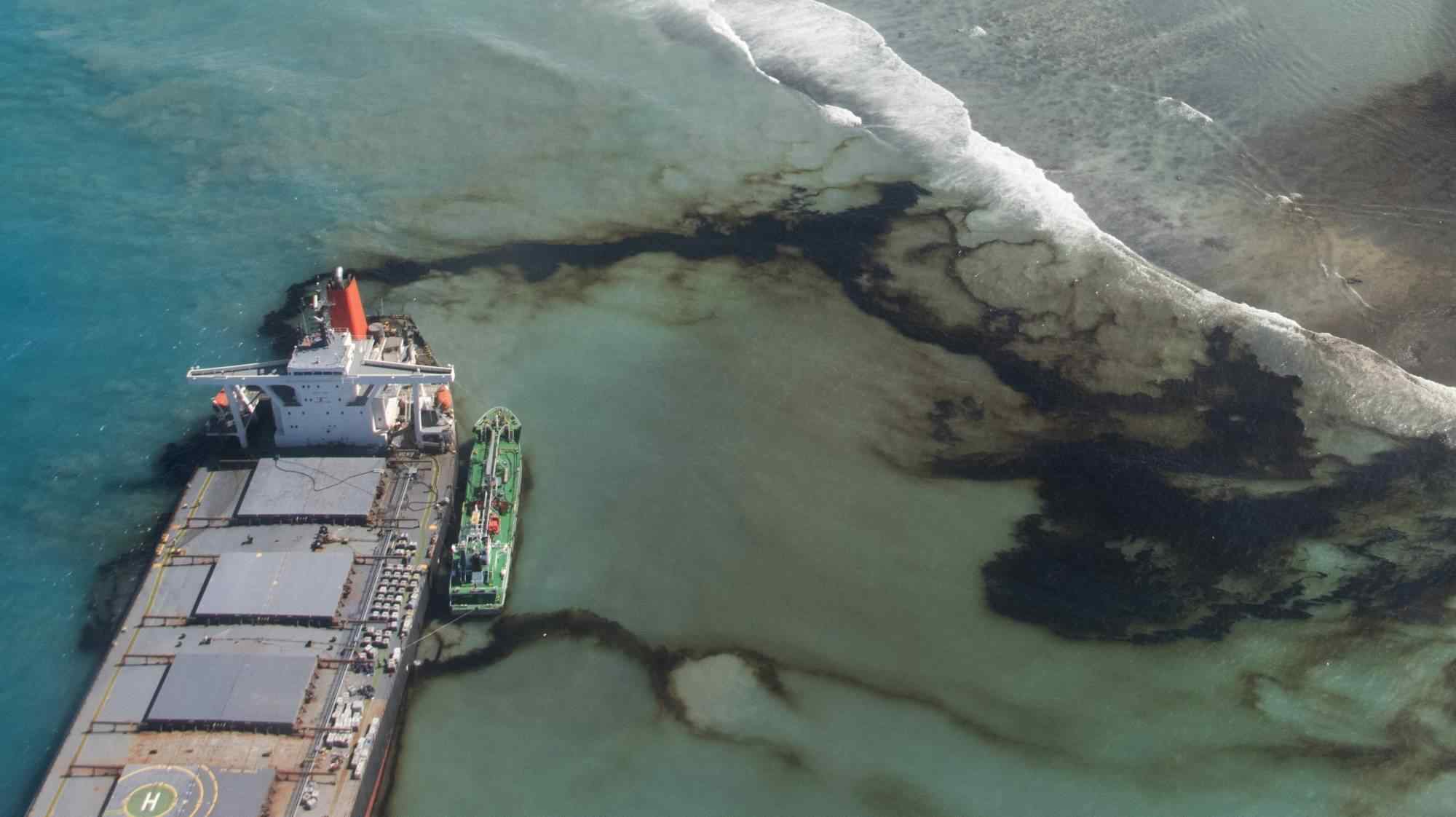
MARPOL Annex I primarily targets the prevention of oil pollution from ships. It warns of oil leakage and prohibits the release of oil and oil mixtures with a certain oil concentration. In addition, the annex also requires the implementation of oil spill prevention activities and thus the installation of oil filter equipment and oil accounting.
1.1:- MARPOL Annex 1 Related Machinery
A. Oily Water Separator
The principal function of an oily water separator (OWS) is to extract oil and other pollutants from bilge water produced on ships and offshore installations.
Pollution Prevention: The OWS plays an important role in preventing contamination of maritime ecosystems by ensuring that it meets statutory oil content criteria before releasing discharged water into the sea.
Discharge standards: Oily water separators (OWS) guarantee that released water meets specified regulatory discharge standards, such as those in MARPOL Annex I.
Oil Content Limits: To prevent environmental contamination, discharged water must meet the high control oil content limitations imposed by legislation. For example, under MARPOL Annex I, the oil content of discharged water cannot exceed 15 parts per million (ppm).
B. Oil Record Book (ORB)
Legal Requirement: Ships require the Oil Record Book (ORB) onboard to document all oil-related operations, such as oil transfers, residues, and discharges.
Regulatory Compliance: Oil record book entrances must adhere to the international laws specified in MARPOL Annex I, which control the avoidance of oil pollution from ships.
Documentation: The oil record book documents a ship’s oil-related activities, including oil transfers, consumption, and disposal.
Detailed Entries: Entries in the oil record book include information like date, time, location, quantity of oil transferred, disposal methods, and causes of any oil-related events or emergencies.
Types of Oil Record Book
Oil Record Book Part I-(Machinery Space Operations) This record book is used to document oil-related operations in ships’ machinery compartments, such as the discharge and disposal of oil leftovers.
Oil Record Book Part II-(Cargo/Ballast Operations) is intended to record oil-related operations that do not take place in machinery spaces, such as cargo and ballast operations.
C. International Oil Pollution Prevention (IOPP) Certificate
Legal Requirement: The International Oil Pollution Prevention (IOPP) Certificate is required for ships to demonstrate compliance with MARPOL Annex 1.
Issuance: The flag administration or approved organization (classification societies) issue this certificate. Validity and Renewal: The IOPP Certificate is valid for a set term, usually no more than five years, after which it must be renewed through additional inspections and surveys to ensure continuous compliance with MARPOL Annex 1 regulations.
D. Shipboard Oil Pollution Emergency Plan (SOPEP)
MARPOL Annex I requires the Shipboard Oil Pollution Emergency Plan (SOPEP), which outlines the procedures and regulations for dealing with oil leaks or pollution incidents at sea.
The equipment required to be included in a vessel’s SOPEP are:
- Oil spill response equipment: It consists of oil containment booms, skimmers, oil absorbent materials, and oil recovery equipment used to contain and recover spilled oil.
- Communication equipment: This includes radios, satellite communication devices, and emergency contact information for speedy communication with necessary authorities and response organizations.
- Navigation equipment: It includes charts, GPS devices, and other aids for precisely locating the spill and coordinating response actions.
- Personal protective equipment (PPE): It includes gloves, goggles, protective clothes, and respiratory protection to safeguard the safety of anyone involved in oil spill response activities.
- Pollution control products: Items such as dispersants and chemical agents, are used to reduce the environmental impact of oil spills.
E. MARPOL Annex 1 Special Areas
MARPOL Annex I provides enhanced protection from oil pollution for specific areas such as the Mediterranean, Baltic, and Black Seas, the Red Sea, the Persian Gulf, the Gulf of Aden, the Gulf of Oman, the Gulf of Mexico, Southern South African Waters, and Antarctica, due to their ecological sensitivity. Vessels in these areas must follow strict laws to protect marine ecosystems and prevent oil pollution.
2:- MARPOL Annex 2: Prevention of pollution by Noxious Liquid Substances in bulk

MARPOL Annex 2 covers the control and proper handling of noxious liquid substances carried in bulk by ships. Toxic liquid substances can be dangerous and harmful. Therefore, properly handling substances is crucial to avoid pollution and damage to people and the environment. It establishes the conditions for labeling hazardous substances and specifies the procedures that must be followed during their use, transportation, or unloading.
2.1:- MARPOL Annex 2 Categories
- MARPOL Annex 2 Category-X:- Authorities typically prohibit the discharge of Category X substances into the sea unless they specifically approve it in extraordinary circumstances. They consider these drugs hazardous to the marine environment and a major pollution concern.
- MARPOL Annex 2 Category-Y:- They do not impair the marine environment but may endanger human health or safety. The discharge of Category Y compounds is permissible under controlled conditions, subject to certain restrictions and requirements stipulated in the regulations.
- MARPOL Annex 2 Category-Z:- Authorities typically permit the discharge of Category Z compounds without restriction, as long as it does not violate other applicable restrictions, considering them safe for both the marine environment and human health.
2.2:- MARPOL Annex 2 Related Machinery and Certificates
A. MARPOL Annex 2 Cargo Record Book
International regulations by the International Maritime Organization (IMO), MARPOL, mandate the requirement for cargo record books. Contents: The book contains details of numerous cargo-related tasks such as loading, unloading, handling, and storing cargo, as well as tank cleaning. Entries: The ship’s officers in charge of cargo operations, typically the chief officer or cargo officer, fill up the cargo record book. They make these entries in chronological order, ensuring precision and completeness.
B. International Pollution Prevention Certificate for the Transportation of Noxious Liquid Substances
Regulatory Requirement: MARPOL requires the NLS Certificate. It is specially regulated by the MARPOL Annex 2, which deals with the regulation of bulk pollution caused by hazardous liquid chemicals.
Purpose: The NLS Certificate’s principal aim is to guarantee that ships follow the requirements contained in Annex 2 of MARPOL. It verifies that a ship has met the safety criteria for transporting and handling hazardous liquid chemicals.
Issuing Authority: The NLS Certificate is provided by the ship’s flag state administration following an inspection to ensure compliance with the MARPOL Annex 2 regulations.
C. MARPOL Annex 2 Special Areas
Special areas designated under MARPOL Annex 2 for enhanced protection against pollution from toxic liquid chemicals include the Antarctic Region. Vessels in these areas must follow tight restrictions to protect marine habitats and prevent pollution from dangerous chemicals.
3:- MARPOL Annex 3: Prevention of Pollution by Harmful Substances in Packaged Form

MARPOL Annex 3 regulates the packaging, labeling, and stowage of harmful substances carried by ships in packaged form. It intends to protect against damage or leakage of packaged, harmful products during transportation.
3.1:- MARPOL Annex 3 Related Certificates
A. International Maritime Dangerous Goods (IMDG) Code:
The IMDG Code categorizes dangerous items according to their qualities and possible dangers. These include explosives, gases, flammable liquids, flammable solids, oxidizing substances, poisonous substances, infectious substances, radioactive materials, caustic substances, and other hazardous substances.
Categories of IMDG Code
- Explosives (Class 1) are materials and products, like flares, ammunition, and fireworks, that have the potential to explode.
- Gases (Class 2): Compressed, liquefied, and dissolved gases, as well as substances with a boiling point of 20°C (68°F) or less at 101.3 kPa (absolute pressure), are classified as gases.
- Flammable Liquids (Class 3): Materials that are liquids, liquid mixes, or liquids containing solids in suspension or solution that, at temperatures not exceeding 60°C (140°F) or below the flashpoint, release a flammable vapor.
- Flammable Solids (Class 4): Materials that easily catch fire or that, through friction, have the potential to start or spread a fire.
- Oxidizing Substances and Organic Peroxides (Class 5): Substances that release organic peroxides or any other oxidizing substances.
- Toxic and Infectious Compounds (Class 6): This category includes compounds such as poisons, infectious materials, and biological products that are harmful or contagious to people or animals.
- Radioactive Material (Class 7)Materials that include radioactive atoms, such as uranium and plutonium, are classified as radioactive materials.
- Corrosive Substances (Class 8): Materials like acids and alkalis that, when in contact with live tissue, have the potential to cause significant harm.
- Miscellaneous Dangerous Substances and Articles (Class 9): Other dangerous substances and objects: Substances and objects that do not fall under any other category but pose a risk during transportation.
4:- MARPOL Annex 4: Prevention of Pollution by Sewage on Ships

MARPOL Annex 4 emphasizes the prevention of pollution caused by sewage discharge from ships and the disposal of sewage discharges from ships. It obliges the ship owner to maintain water treatment systems on board and imposes a limit on the discharge.
It applies to ships engaged in international voyages of 400 GT and above, certified to carry more than 15 passengers, and allows for the discharge of sewage at a distance of more than 12 NM from the nearest land when the ship is en route. With a communicator, personnel can discharge sewage up to 3 NM.
4.1:- MARPOL Annex 4 Related Machinery & Certificates
A. Sewage Treatment Plant
Ships have sewage treatment plants that treat sewage generated on board before it is discharged into the sea. STPs remove impurities and pathogens from sewage through a variety of techniques, including biological treatment, chemical treatment, and physical separation. Regulatory Compliance: Ships must comply with international rules, such as MARPOL Annex 4 of the International Convention for the Prevention of Contamination from Ships (MARPOL), which establishes requirements for the prevention of sewage contamination by ships.
Sewage Management Plan: Ships must have a sewage management plan outlining processes for collecting, storing, treating, and discharging sewage in compliance with applicable rules.
Sewage Logbook: Ships must keep records of their sewage treatment operations, which include information on sewage creation, treatment processes, and discharge activities. These documents provide evidence of regulatory compliance and may be inspected by port state authorities.
B. International Sewage Pollution Prevention (ISPP) Certificate:
Regulatory Requirements: MARPOL Annex 4 requires the ISPP Certificate. MARPOL Annex 4 focuses on preventing sewage pollution from ships.
Issuing Authority: The flag state government or a duly authorized body issues the ISPP Certificate on behalf of the flag state, which registers the ship under its jurisdiction.
Validity Period: Authorities typically validate the ISPP Certificate for a set duration, usually no more than five years, after which they require renewal through a re-inspection and verification process.
C. MARPOL Annex 4 Special Areas
Under MARPOL Annex 4, authorities have specifically granted additional protection against pollution from sewage and wastewater discharges, particularly in the Baltic Sea.
5:- MARPOL Annex 5: Prevention of pollution by Garbage from ships

MARPOL Annex 5 deals with the prevention of pollution from dumping garbage into the oceans. It assumes that certain types of waste are prohibited and prescribes procedures for the collection, storage, and disposal of waste.
• Garbage includes all kinds of food, domestic and operational waste, plastics, cargo residues, incinerator ashes, cooking oil, fishing gear, and animal carcasses
• Authorities prohibit all plastic. When the ship is en route, personnel may discharge food waste at a distance greater than 12 NM from the nearest land.
5.1:- MARPOL Annex 5 Related Machinery & Certificates
A. Garbage Record Book
Regulatory Requirements: The Garbage Record Book is a necessary document under Annex V of the International Convention for the Prevention of Pollution from Ships (MARPOL). MARPOL Annex 5 focuses on preventing pollution caused by ship trash.
Purpose: The garbage record book keeps track of all garbage that is disposed of or incinerated on board the ship. It facilitates compliance with MARPOL Annex V rules while also allowing for the monitoring and documentation of trash management methods.
Issuing Authority: The Garbage Record Book is handed to the ship by the flag state administration or an authorized agency acting on its behalf. The flag state is the country under whose jurisdiction the ship is registered.
B. Garbage Discharge Criteria
Food Waste: Before dumping into the sea, individuals must cut food waste into pieces no larger than 25 mm, or about 1 inch. Cargo Residues: If the wash water from cargo holds contains no materials considered hazardous to the maritime environment, authorities may release the cargo residues. If the ship is outside of the MARPOL-designated special regions and the closest shore is more than 12 nautical miles away from the ship. Cleaning Agents and Additives: The cargo hold and exterior wash water cannot contain cleaning agents or additives that are detrimental to the maritime environment. Animal Carcasses: If an animal carcass is free of plastics, authorities may release it. It prohibits dumping animal carcasses in designated places unless specific conditions are met.
C. Garbage Management Plan
The Garbage Management Plan, mandated by MARPOL Annex 5, describes the proper management, storage, and disposal of waste onboard a ship.
Plan Content: The plan outlines how to segregate, store, and dispose of waste, as well as how to manage it onboard. It lists the accountable individuals and specifies the crew members’ training needs. Segregation: The plan delineates how to divide trash into groups for appropriate disposal or recycling, such as plastics, food waste, and operational waste. Storage: It specifies the locations and methods for keeping various waste kinds on board the ship to reduce pollution, aromas, and pest attraction. Garbage disposal: The plan dictates waste disposal, including whether to offload rubbish at port reception facilities, utilize onboard incinerators, or employ other authorized disposal techniques. Record-keeping: Included are instructions for keeping a garbage record book that documents all disposal activities, including unintentional or emergency releases.
D. MARPOL Annex 5 Special Areas
Special regions designated under MARPOL Annex 5 for greater protection against rubbish pollution and waste dumping at sea include the Mediterranean Sea, Baltic Sea, Red Sea, Gulf Areas, North Sea, a wider Caribbean region including the Gulf of Mexico and the Caribbean Sea, and Antarctic Region. Vessels in these areas must follow strict laws to avoid marine pollution and maintain the health of ocean ecosystems.
6:- MARPOL Annex 6: Prevention of Air Pollution from ships

MARPOL Annex 6 on air pollution from ships regulates emissions of sulfur oxides (SOx), nitrogen oxides (NOx), particulate matter, and volatile organic compounds (VOCs). It provides emission limits, requires the use of emission control technologies, and defines emission control areas (ECAs) through stricter regulations.
- Nitrogen Oxides, or NOx for short, are a class of gases that mostly consist of nitrogen monoxide (NO) and nitrogen dioxide (NO2) which are produced by the combustion of the Ship engine.
- Sulfur Oxides, Burning fossil fuels like coal and oil, which contain sulfur, creates sulfur dioxide (SO2) and sulfur trioxide (SO3), known as SOx. The primary source of SOX emissions in the maritime sector is the burning of high-sulfur fuel oil in ship engines.
- Ozone-depleting substances, or ODS for short, are chemical substances that cause the ozone layer in the Earth’s stratosphere to thin. These chemicals include, among others, methyl chloroform, carbon tetrachloride, halons, and chlorofluorocarbons (CFCs).
- Volatile Organic Compounds or VOCs are compounds with a high vapor pressure at room temperature. They quickly evaporate into the atmosphere, causing smog and air pollution at ground level.
6.1:- MARPOL Annex 6 Related Machinery and Certificates
A. Exhaust Gas Cleaning System (Scrubber)
Purpose: Ships use Exhaust Gas Cleaning Systems (EGCS), commonly known as scrubbers, as marine pollution control equipment to remove pollutants from the exhaust gases produced by marine diesel engines.
Regulatory Background: Ships use EGCS to comply with SOx emission rules, namely Annex 6 of the International Maritime Organization’s (IMO) International Convention for the Prevention of Pollution from Ships (MARPOL).
Sulfur Oxide Reduction: Scrubbers typically minimize sulfur oxide emissions from ship engines by purifying exhaust gases before they enter the atmosphere.
B. Nitrogen Oxide (NOx) Reduction Systems
Purpose: Ships install NOx Reduction Systems as marine pollution control devices to minimize emissions of nitrogen oxides (NOx) from marine diesel engines.
Regulatory Background: Ships use NOx Reduction Systems to comply with air pollution-reducing laws such as Annex VI of the International Maritime Organization’s (IMO) International Convention for the Prevention of Pollution from Ships (MARPOL).
Emissions Reduction: Manufacturers primarily design NOx Reduction Systems to reduce nitrogen oxide emissions, comprising nitrogen dioxide (NO2) and nitric oxide (NO), both contributing to air quality degradation and health effects as toxic air pollutants.
C. International Air Pollution Prevention (IAPP) Certificate
Issuing Authority: The flag state’s administration or an authorized body acting on its behalf issues the IAPP Certificate. Typically, the flag state, which registers the ship under its jurisdiction, performs this task.
Verification of Compliance: Before awarding the IAPP Certificate, the flag state administration or its authorized agency certifies that the ship’s engines and emissions control systems meet MARPOL Annex 6 standards.
Validity Period: The IAPP Certificate remains valid for a set duration, typically no more than five years, requiring renewal through a re-inspection and verification process thereafter.
D. Incinerator
Purpose: Incinerators are pieces of onboard equipment that use heat to treat the solid waste produced by ships. They intend to combust waste at high temperatures, reducing the volume and converting it to ash residue.
Regulatory Requirements: Incinerators on ships are subject to Annex VI of the International Convention for the Prevention of Pollution from Ships (MARPOL). Annex VI covers measures for preventing air pollution from ships, including emissions from incinerators.
Types of incinerators: Incinerators used on ships are classified into two types: solid waste incinerators and sludge oil incinerators.
Solid waste incinerators burn paper, cardboard, food scraps, and plastics, while sludge oil incinerators primarily burn oily wastes like sludge.
E. MARPOL Annex 6 Special Areas
MARPOL Annex 6 provides further protection against air pollution from ship emissions in particular locations, such as the Baltic Sea, North Sea, North American Area, United States Caribbean Sea, and Antarctic Region. Vessels in these locations must follow stringent restrictions to limit air emissions, protect air quality, and mitigate environmental damage.
Check out the steps taken by IMO to reduce the harmful emissions of ships
Conclusion
In conclusion, MARPOL is a key tool that helps in the international efforts towards the conflict of marine pollution as well as to protect the health of the oceans globally. Through its 6 annexes, MARPOL addresses various forms of pollution from ships, including oil, chemicals, sewage, garbage, and air emissions, minimizing the environmental impact of ship operations.
Disclaimer :- The opinions expressed in this article belong solely to the author and may not necessarily reflect those of Merchant Navy Decoded. We cannot guarantee the accuracy of the information provided and disclaim any responsibility for it. Data and visuals used are sourced from publicly available information and may not be authenticated by any regulatory body. Reviews and comments appearing on our blogs represent the opinions of individuals and do not necessarily reflect the views of Merchant Navy Decoded. We are not responsible for any loss or damage resulting from reliance on these reviews or comments.
Reproduction, copying, sharing, or use of the article or images in any form is strictly prohibited without prior permission from both the author and Merchant Navy Decoded.
